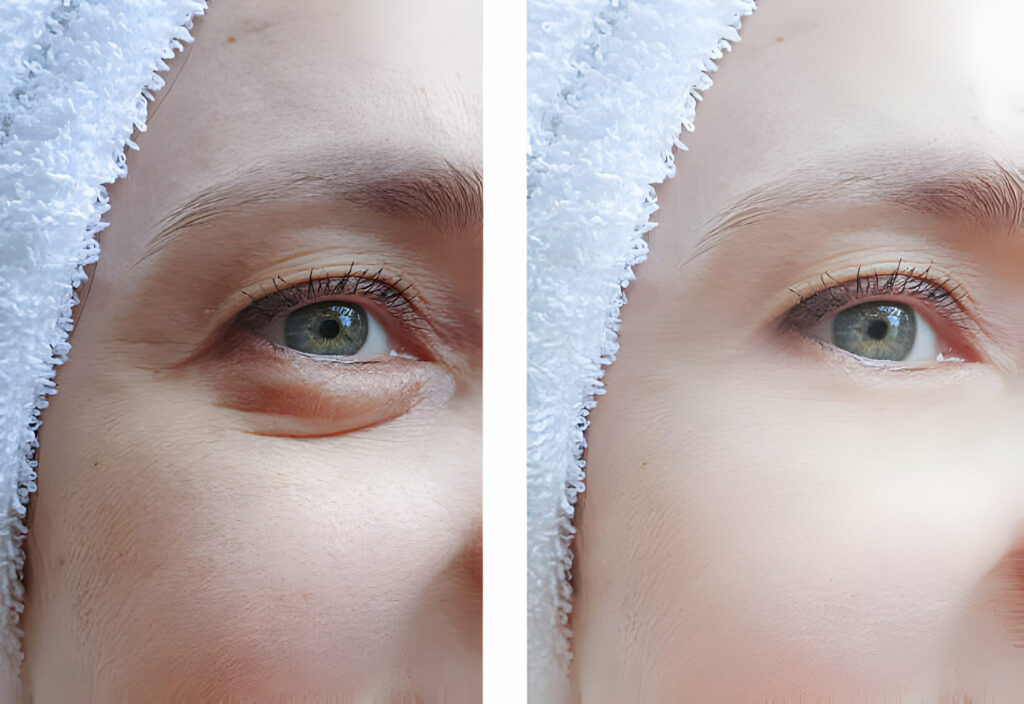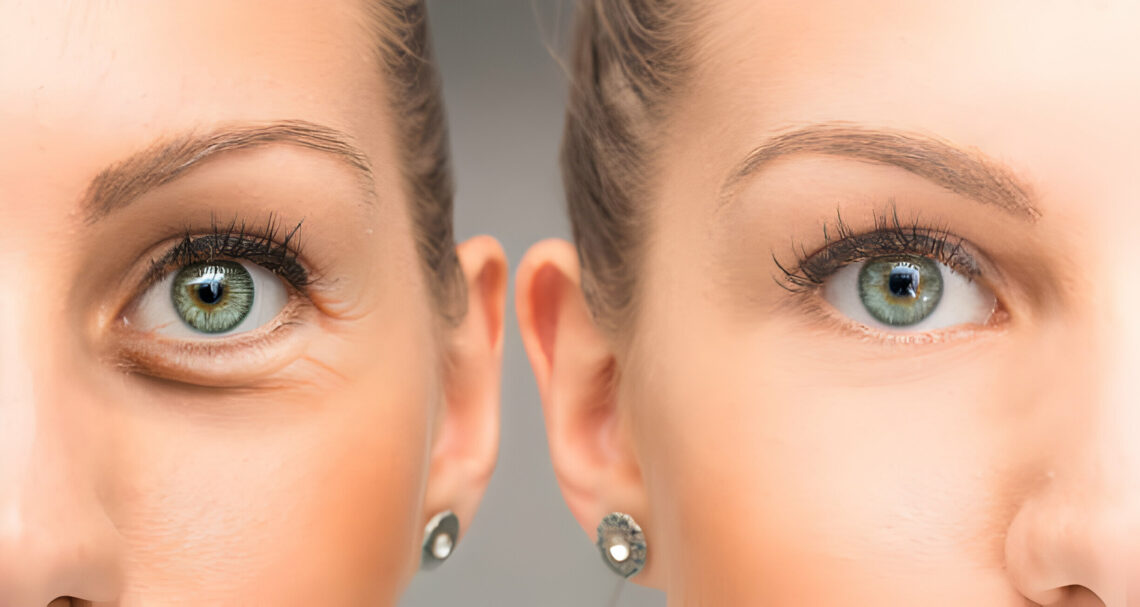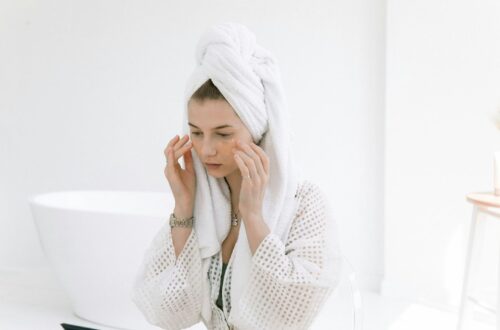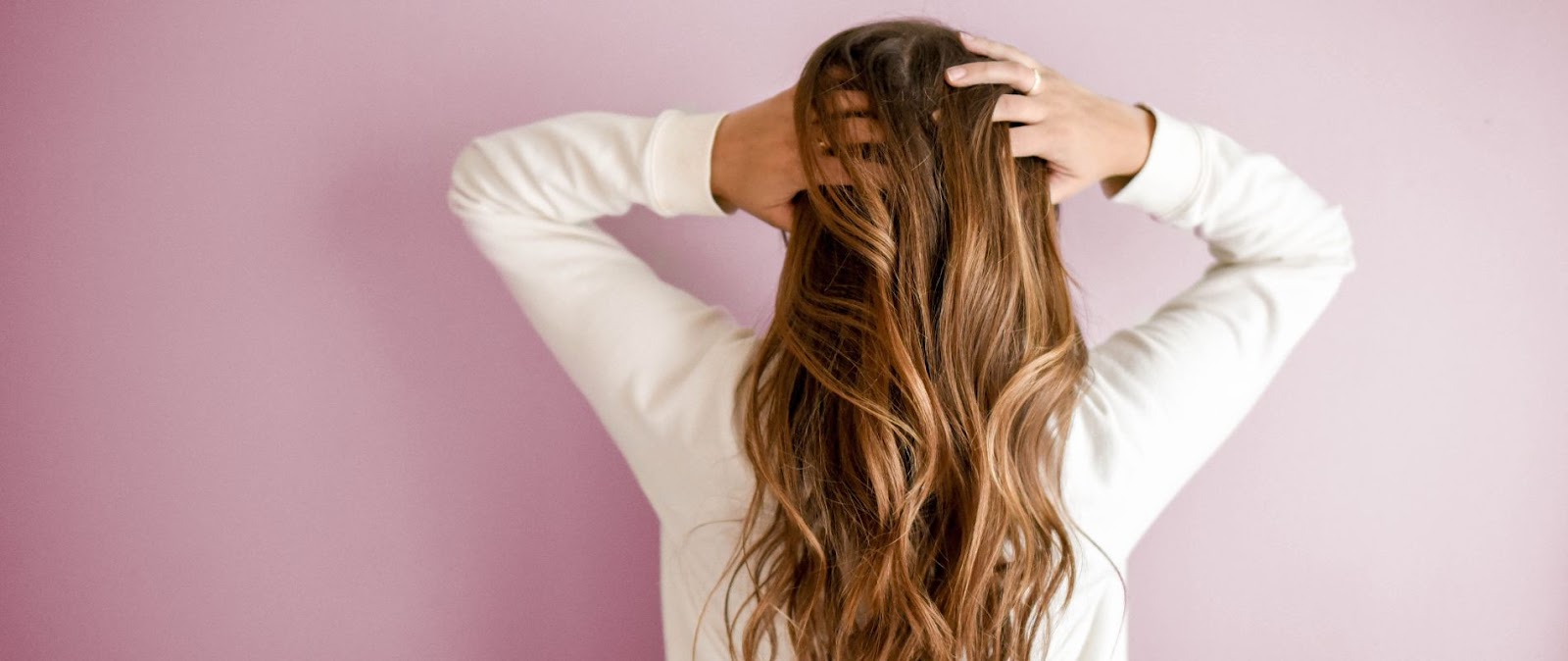Under eye puffiness is when the skin under your eyes swells up, making you look tired or older than you are. It happens for different reasons like not getting enough sleep, holding onto too much water, having allergies, or just getting older. It’s important to get the best treatment for under eye puffiness not just because it affects how you look, but also because it can make you feel less confident and happy.
In this blog, we will help you understand how to treat under eye puffiness. Moreover, we’ll talk about simple things you can do at home as well as more serious treatments you can get from a professional.
Causes of Under Eye Puffiness
- Lack of Sleep: One common cause of under eye puffiness is not getting enough sleep. When you don’t sleep well, fluid can accumulate under your eyes, causing them to swell. This is why people often notice puffiness under their eyes after a restless night.
- Fluid Retention: Sometimes, your body holds onto too much water, which can lead to puffiness all over, including under the eyes. This can happen due to factors like dehydration, excessive salt intake, hormonal changes, or certain medical conditions.
- Aging: As we age, the skin under our eyes becomes thinner and less elastic. This can make it easier for fluid to accumulate and for fat deposits to become more noticeable, resulting in under eye puffiness. Additionally, the muscles that support the eyelids weaken over time, contributing to sagging and puffiness.
- Allergies: Allergic reactions can cause under eye puffiness, particularly if you have allergies that affect your eyes. When your body reacts to allergens like pollen, pet dander, or dust mites, it releases histamines, which can lead to inflammation and swelling around the eyes.
How Under Eye Puffiness Differs from Dark Circles and Eye Bags?
Under eye puffiness, dark circles, and eye bags are often used interchangeably, but they actually refer to distinct conditions, each with its own causes and characteristics.
| Condition | Description |
| Under Eye Puffiness | Characterized by swelling or puffiness beneath the eyes due to excess fluid accumulation. Can be temporary (e.g., lack of sleep) or chronic (e.g., aging, genetics). |
| Dark Circles | Refers to darker pigmentation beneath the eyes caused by genetics, thinning skin, blood vessel dilation, and lifestyle factors like lack of sleep or stress. |
| Eye Bags | Characterized by the protrusion of fat pads or swelling beneath the eyes, resulting in a bulging appearance. Caused by the weakening of muscles and ligaments around the eyes. |
Lifestyle Changes to Reduce Under Eye Puffiness
Incorporating these lifestyle changes into your daily routine can help minimize under eye puffiness and promote a more refreshed and rejuvenated appearance:
Importance of Adequate Sleep
Getting enough sleep is crucial for maintaining healthy skin and reducing under eye puffiness. When you’re sleep-deprived, your body retains more fluid, which can lead to swelling around the eyes. Aim for 7-9 hours of quality sleep each night to allow your body to repair, reducing the likelihood of waking up with puffy eyes.
Hydration and Its Impact on Reducing Puffiness
Staying properly hydrated is essential for overall health and can also help minimize under eye puffiness. When you’re dehydrated, your body tends to retain water, leading to puffiness and bloating. Make sure to drink plenty of water throughout the day to help flush out toxins and reduce fluid retention, which can contribute to puffiness around the eyes.
Dietary Adjustments to Minimize Fluid Retention
Certain dietary choices can either exacerbate or alleviate under eye puffiness. Foods high in sodium can cause your body to retain water, leading to puffiness, so try to limit your intake of salty snacks and processed foods. On the other hand, incorporating potassium-rich foods like bananas, avocados, and leafy greens into your diet can help balance sodium levels and reduce fluid retention, potentially reducing under eye puffiness.
Stress Management Techniques
Chronic stress can wreak havoc on your body and may contribute to under eye puffiness. When you’re stressed, your body releases cortisol, a hormone that can lead to inflammation and fluid retention. Practicing stress management techniques such as deep breathing, meditation, yoga, or spending time in nature can help reduce cortisol levels and promote relaxation, which may help alleviate under eye puffiness.
Home Remedies for Under Eye Puffiness
These simple and natural home remedies can be effective in reducing under eye puffiness and promoting a more refreshed appearance.
1 – Cold Compress
Applying a cold compress to the under eye area can help reduce puffiness by constricting blood vessels and reducing swelling. Simply wrap a few ice cubes in a clean cloth or use a chilled gel eye mask, and gently apply it to the under eye area for 10-15 minutes. The cold temperature can help shrink swollen tissues and provide immediate relief from puffiness.
2 – Cucumber Slices
Cucumber slices are a classic remedy for reducing under eye puffiness and soothing tired eyes. Cucumbers contain antioxidants and flavonoids that help reduce inflammation and tighten the skin. To use this remedy, chill cucumber slices in the refrigerator for about 30 minutes, then place them over your closed eyelids for 10-15 minutes. The coolness of the cucumber slices can help alleviate puffiness and refresh the under eye area.
3 – Tea Bags
Both green tea and black tea contain caffeine and antioxidants that can help reduce under eye puffiness and tighten the skin. After brewing a cup of tea, allow the tea bags to cool down, then place them in the refrigerator for 20-30 minutes. Once chilled, place the tea bags over your closed eyelids for 10-15 minutes. The caffeine in the tea helps constrict blood vessels and reduce fluid retention, while the antioxidants help soothe the skin.
4 – Aloe Vera Gel
Aloe vera gel is known for its soothing and anti-inflammatory properties, making it an excellent remedy for reducing under eye puffiness. Simply apply a small amount of pure aloe vera gel to the under eye area and gently massage it in using your fingertips. Leave it on for 10-15 minutes, then rinse off with cool water. Aloe vera helps reduce swelling and irritation, leaving the under eye area feeling refreshed and revitalized.
5 – Potato Slices
Potatoes contain enzymes and vitamin C that can help reduce under eye puffiness and lighten dark circles. To use this remedy, chill potato slices in the refrigerator for about 30 minutes, then place them over your closed eyelids for 10-15 minutes. The coolness of the potato slices helps constrict blood vessels and reduce swelling, while the enzymes and vitamin C help brighten and tighten the skin.
Skincare Products for Under Eye Puffiness

Incorporating skincare products into your daily routine can help address under eye puffiness and promote a smoother, more youthful-looking appearance. Choose under eye masks that suit your skin type and concerns, and be consistent with your skincare regimen to achieve optimal results.
1 – Eye Creams with Caffeine
Eye creams formulated with caffeine are popular for their ability to reduce under eye puffiness. Caffeine helps constrict blood vessels and reduce fluid retention, leading to a tighter and more refreshed appearance. When applied topically, caffeine can also help stimulate circulation and promote lymphatic drainage, helping to diminish puffiness over time. Look for eye creams containing caffeine as a key ingredient and apply them gently to the under eye area morning and night for best results.
2 – Products Containing Hyaluronic Acid
Hyaluronic acid is a hydrating powerhouse that can be beneficial for reducing under eye puffiness. This molecule has the ability to hold up to 1000 times its weight in water, making it incredibly effective at plumping and moisturizing the skin. When applied around the eyes, hyaluronic acid helps hydrate and smooth the delicate under eye area, minimizing the appearance of puffiness and fine lines. Look for under eye masks or serums containing hyaluronic acid as a key ingredient to keep the under eye area hydrated and supple.
3 – Retinol-Based Creams
Retinol, a form of vitamin A, is well-known for its anti-aging benefits, but it can also be effective at reducing under eye puffiness. Retinol works by stimulating collagen production and increasing cell turnover, which can help improve skin firmness and elasticity. By strengthening the skin’s underlying structure, retinol-based creams can help reduce the appearance of under eye puffiness and smooth out fine lines and wrinkles. However, retinol can be drying and irritating to the delicate skin around the eyes, so it’s important to start with a low concentration and gradually increase frequency to avoid irritation.
4 – Vitamin C Serums
Vitamin C is a powerful antioxidant that can help brighten and rejuvenate the under eye area, making it appear more refreshed and youthful. Vitamin C serums work by neutralizing free radicals and stimulating collagen production, which can help improve skin texture and reduce the appearance of puffiness and dark circles. Additionally, vitamin C has anti-inflammatory properties that can help soothe and calm irritated skin, making it a great option for reducing under eye puffiness. Look for serums containing stable forms of vitamin C, such as ascorbic acid or tetrahexyldecyl ascorbate, and apply them gently to the under eye area daily for best results.
Professional Treatments for Under Eye Puffiness
When home remedies and over-the-counter products don’t provide the desired results, professional treatments can offer more advanced solutions for under eye puffiness. These treatments are typically performed by dermatologists or trained skincare professionals and can target specific underlying causes of puffiness to achieve more noticeable and long-lasting results.
1 – Chemical Peels
Chemical peels involve the application of a chemical solution to the skin, which exfoliates the outermost layer and stimulates collagen production. For under eye puffiness, mild chemical peels containing alpha hydroxy acids (AHAs) or beta hydroxy acids (BHAs) can help improve skin texture and reduce puffiness by promoting cell turnover and tightening the skin. Chemical peels can also help lighten dark circles and improve overall skin tone and texture.
2 – Microneedling
Microneedling, also known as collagen induction therapy, involves the use of a device with fine needles to create controlled micro-injuries in the skin. These micro-injuries stimulate the body’s natural healing response, leading to increased collagen and elastin production. For under eye puffiness, microneedling can help improve skin firmness and reduce the appearance of puffiness by tightening the skin and improving its overall texture. Additionally, microneedling can enhance the penetration of topical skincare products, allowing for better absorption of active ingredients.
3 – Dermal Fillers
Dermal fillers are injectable treatments that contain hyaluronic acid or other biocompatible substances to add volume and lift to the skin. For under eye puffiness, dermal fillers can be strategically injected to fill hollows and smooth out contours, reducing the appearance of puffiness and restoring a more youthful appearance. Dermal fillers can also help camouflage dark circles by providing structural support and lifting the under eye area.
4 – Laser Therapy
Laser therapy involves the use of focused laser energy to target specific skin concerns, including under eye puffiness. Fractional laser resurfacing and non-ablative laser treatments can help improve skin firmness and reduce puffiness by stimulating collagen production and tightening the skin. Additionally, laser therapy can target pigmentation irregularities and improve overall skin texture and tone, leading to a more refreshed and rejuvenated appearance.
Considerations Before Choosing a Treatment
Before embarking on any treatment for under eye puffiness, it’s important to consider several factors to ensure you select the most suitable option for your individual needs and preferences.
Skin Type and Sensitivity
Different treatments may be better suited for certain skin types and sensitivities. For example, individuals with sensitive skin may need to avoid aggressive treatments like chemical peels or certain laser therapies that could potentially cause irritation or adverse reactions. It’s essential to consult with a dermatologist or skincare professional who can assess your skin type and sensitivity and recommend treatments that are safe and effective for you.
Budget Considerations
Professional treatments for under eye puffiness can vary significantly in cost, depending on factors such as the type of treatment, the number of sessions required, and the provider’s expertise. Before committing to a specific treatment, it’s important to consider your budget and weigh the cost against the expected benefits. While some treatments may require a significant financial investment, others may offer more affordable options without compromising on effectiveness. Be sure to inquire about the total cost of treatment, including any additional fees or follow-up appointments, to avoid any surprises later on.
Time Commitment for Each Treatment Option
Different treatments for under eye puffiness require varying degrees of time commitment, both in terms of the duration of each session and the overall treatment course. For example, while home remedies like cold compresses or cucumber slices can be applied relatively quickly and easily at home, professional treatments such as chemical peels or laser therapy may involve multiple sessions spaced out over several weeks or months. Consider your schedule and lifestyle when choosing a treatment option, and be prepared to commit to the necessary time and follow-up appointments to achieve the desired results.
Conclusion
Dealing with under eye puffiness isn’t just about looks, it’s also about feeling good about yourself. Therefore, it’s important to pick the method that works best for you and fits your budget and schedule. Don’t forget, it might take some time to see results, especially with the bigger treatments.
Always talk to a doctor or skincare expert before trying anything new, so you can make sure you’re doing what’s best for your skin.





